
- 1- The Importance of Cycling Recovery
- 2- Top Cycling Recovery Tools: Massage Guns, Foam Rollers, and Bands
- 3- Massage Guns for Effective Recovery
- 4- Foam Rollers: A Must-Have for Cyclists
- 5- Recovery Bands: Simple Yet Effective Tools
- 6- Real-Life Case Study: How Recovery Tools Transformed My Cycling Routine
1. The Importance of Cycling Recovery
Cycling is an intense physical activity that places significant strain on your muscles and joints. Whether you are a professional cyclist or a weekend enthusiast, effective recovery is essential for improving performance and preventing injury. Recovery after cycling involves allowing your body to heal and repair the muscle tissues that have been stressed during your ride. This is where specialized recovery tools come in, helping to speed up the process and reduce the likelihood of soreness or stiffness.
Using the right recovery tools not only reduces muscle tension but also helps to increase blood flow, improve flexibility, and prevent long-term injuries. Let's take a closer look at some of the most effective cycling recovery tools that every cyclist should consider integrating into their post-ride routine.
2. Top Cycling Recovery Tools: Massage Guns, Foam Rollers, and Bands
There are numerous recovery tools on the market, but three of the most popular and effective tools for cyclists are massage guns, foam rollers, and recovery bands. Each of these tools plays a unique role in the recovery process, helping to target different muscle groups and alleviate tension in ways that enhance overall recovery.
Here’s a breakdown of each tool:
- Massage Guns: These handheld devices deliver rapid pulses of pressure to the muscles, helping to release tightness and improve circulation. They are highly effective in targeting specific areas of tension.
- Foam Rollers: Foam rolling helps release muscle knots, improve flexibility, and increase blood flow to fatigued muscles. It’s a low-cost, effective tool that can be used to target the large muscle groups commonly strained during cycling.
- Recovery Bands: Recovery bands are flexible and versatile, used for stretching and muscle activation. They help improve range of motion, reduce stiffness, and are particularly useful for strengthening muscles after cycling.
These tools, when used consistently, can significantly enhance a cyclist’s ability to recover faster and perform better in future rides.
3. Massage Guns for Effective Recovery
Massage guns have gained immense popularity in recent years for their ability to provide deep tissue massage quickly and efficiently. These devices use percussive therapy to deliver rapid, targeted pulses of pressure into the muscles, helping to break up tightness and promote muscle relaxation. For cyclists, a massage gun can be especially effective for addressing areas that experience the most tension, such as the quads, hamstrings, and calves.
Regular use of a massage gun can help increase blood flow to these areas, accelerating the healing process and reducing muscle soreness after long rides. Many cyclists use massage guns post-ride to prevent stiffness and promote flexibility, which helps with both recovery and performance on the bike.
Massage guns come with adjustable speeds and attachments that allow you to customize your experience based on your needs. Whether you are targeting a specific muscle group or performing a full-body treatment, a massage gun can be a game-changer in your recovery routine.
4. Foam Rollers: A Must-Have for Cyclists
Foam rolling is one of the simplest and most cost-effective ways to aid in recovery. This technique involves rolling your body over a foam cylinder, targeting the muscles that are tight or sore. Foam rolling helps to release myofascial tension, which can build up after cycling, and promotes blood flow to the muscles, helping to flush out metabolic waste and bring in fresh oxygen and nutrients.
Cyclists can benefit from foam rolling by focusing on the quads, hamstrings, calves, and back—areas that tend to get tight after a ride. Regular foam rolling improves flexibility, reduces soreness, and can even help with postural alignment by addressing muscle imbalances. It’s an effective way to increase your range of motion and keep your muscles in top condition, ready for the next ride.
Another benefit of foam rolling is its ability to prevent injury. By loosening tight muscles and increasing blood flow, it helps reduce the risk of strains or overuse injuries, which are common among cyclists who ride frequently.
5. Recovery Bands: Simple Yet Effective Tools
Recovery bands, also known as resistance bands, are often overlooked but can be an excellent addition to a cyclist’s recovery routine. These elastic bands are highly versatile and can be used for a variety of exercises, including stretching, strengthening, and muscle activation. They are particularly useful for targeting the hip flexors, glutes, and hamstrings, areas that tend to tighten up during cycling.
By incorporating recovery bands into your routine, you can improve flexibility and range of motion, which is essential for maintaining optimal cycling performance. They are also effective for injury prevention, as they can help activate muscles and improve their strength, which can reduce the risk of overuse injuries.
Recovery bands are portable, affordable, and easy to use, making them an excellent tool for both at-home and on-the-go recovery sessions.
6. Real-Life Case Study: How Recovery Tools Transformed My Cycling Routine
John, a dedicated amateur cyclist, experienced consistent soreness in his legs and lower back after long rides. He tried various methods to alleviate the discomfort, including stretching, rest, and even massages, but nothing seemed to provide lasting relief. That was until he incorporated massage guns, foam rollers, and recovery bands into his routine.
After just a few weeks of using a combination of these tools post-ride, John noticed a dramatic reduction in muscle soreness and stiffness. The massage gun helped target the tight muscles in his quads and hamstrings, while the foam roller improved his flexibility and reduced back tension. Additionally, the recovery bands helped him strengthen key muscle groups, enhancing his overall cycling performance.
John credits these recovery tools with improving his riding experience and allowing him to ride longer and more frequently without the fear of overuse injuries. His case highlights how these tools can make a significant difference in a cyclist’s recovery process and overall performance.

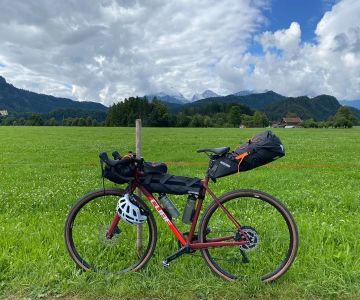
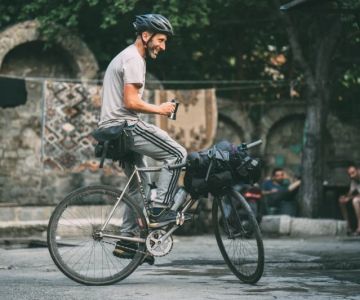


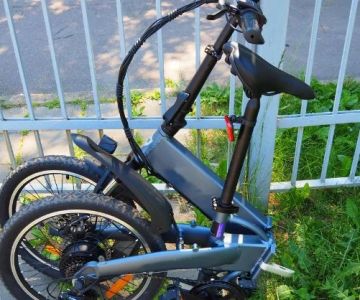

 PowerPedalz Electric bikes0.0 (0 reviews)
PowerPedalz Electric bikes0.0 (0 reviews) Bicycle One4.0 (227 reviews)
Bicycle One4.0 (227 reviews) A & C Discount World4.0 (1 reviews)
A & C Discount World4.0 (1 reviews)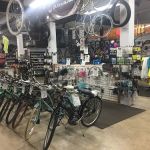 Spoke Life Cycles (Elmore)4.0 (45 reviews)
Spoke Life Cycles (Elmore)4.0 (45 reviews) The Electric Bike Shop5.0 (608 reviews)
The Electric Bike Shop5.0 (608 reviews) ProBuilds Mobile Bike Shop3.0 (2 reviews)
ProBuilds Mobile Bike Shop3.0 (2 reviews) How to Teach Kids to Ride a Bike: A Step-by-Step Guide for Parents
How to Teach Kids to Ride a Bike: A Step-by-Step Guide for Parents Tips for Riding on Busy City Streets: Smart Strategies for Urban Cyclists
Tips for Riding on Busy City Streets: Smart Strategies for Urban Cyclists Best US National Parks for Mountain Biking: Ride Epic Trails Across America
Best US National Parks for Mountain Biking: Ride Epic Trails Across America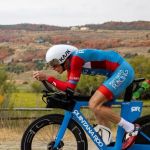 Best Aero Helmets for Time Trials and Racing
Best Aero Helmets for Time Trials and Racing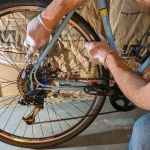 How to Clean and Lubricate Your Bike Chain Like a Pro
How to Clean and Lubricate Your Bike Chain Like a Pro 10 Must-Have Items for Long-Distance Cycling Trips
10 Must-Have Items for Long-Distance Cycling Trips